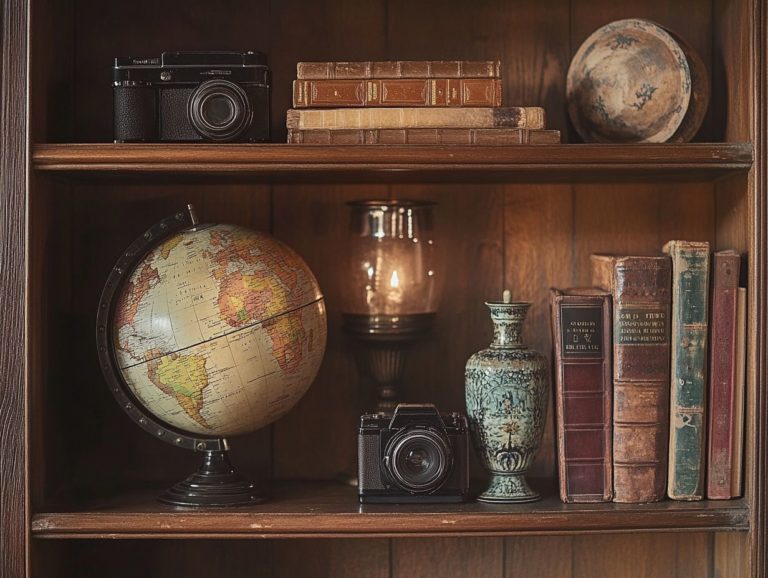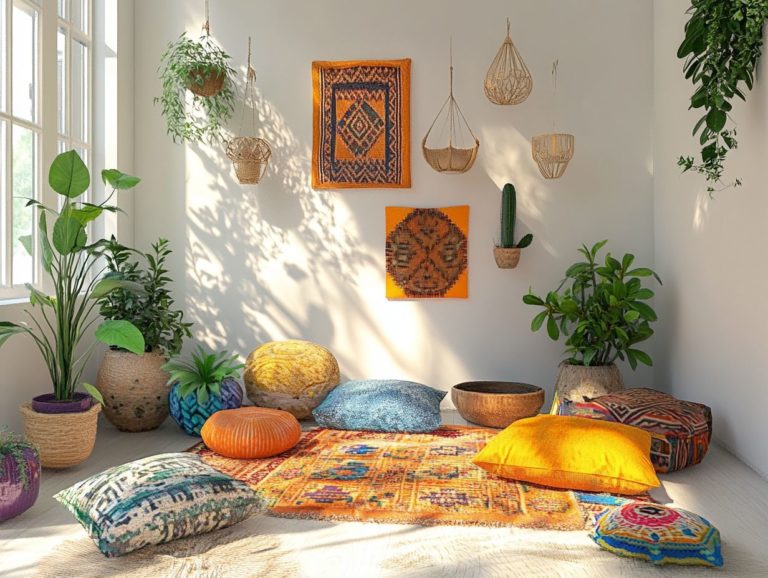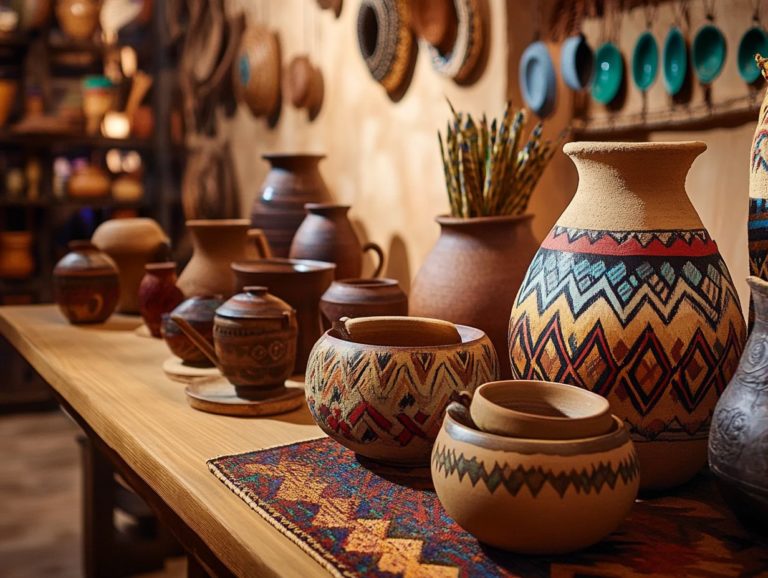How to Use Color Theory with Decorative Items
Color possesses an incredible ability to transform a space, shaping both mood and perception. Grasping the fundamentals of color theory is essential for crafting a harmonious home environment.
This article delves into the core principles of color, guiding you from the basics of the color wheel to the art of creating an effective color scheme. You ll discover how to thoughtfully incorporate decorative items, blend hues, and establish focal points that infuse your home with balance and energy.
Whether you aim to refresh a room or embark on a complete redesign, these insights will steer you toward a vibrant and inviting space.
Contents
- Key Takeaways:
- Understanding Color Theory
- Using Color Theory in Home Decor
- Conclusion
- Incorporating Decorative Items
- Creating Balance and Harmony
- Tips for Using Color Theory in Home Decor
- Frequently Asked Questions
- Got questions about color theory? Let’s dive in!
- What is color theory and why is it important for decorating with decorative items?
- How can I use the color wheel to choose decorative items for my home?
- What are some ways to incorporate color theory into my home decor?
- Can I mix and match different colors and patterns when using color theory with decorative items?
- How can I use color theory to create a specific mood or atmosphere in a room?
- Are there any common mistakes to avoid when using color theory with decorative items?
Key Takeaways:
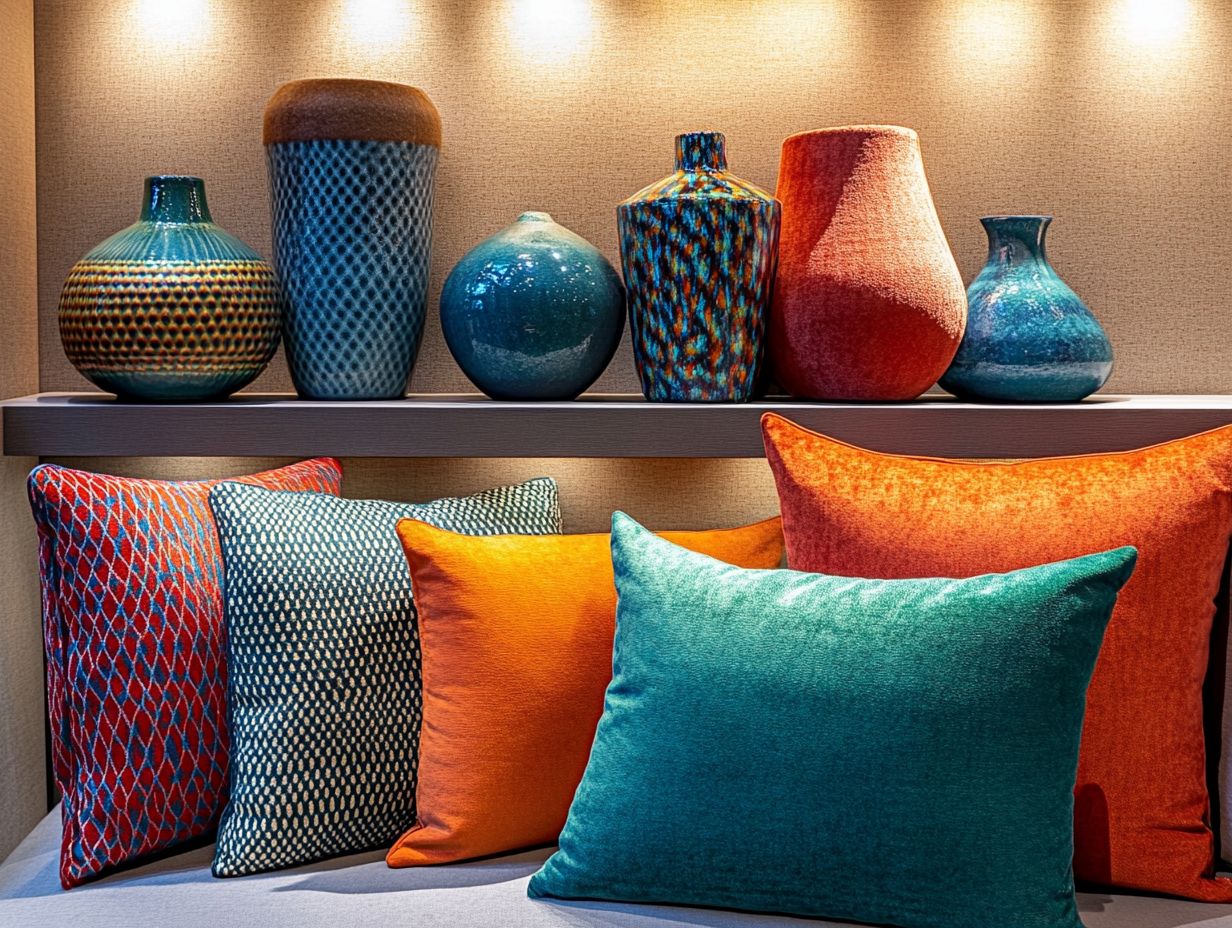
- Understand the basic principles of color theory and use the color wheel to create a cohesive color scheme for your home decor.
- Incorporate decorative items in your home by choosing colors that complement or contrast with your existing color scheme to create balance and harmony.
- Experiment with different color schemes and incorporate texture and contrast to add interest and create a focal point in your home decor.
Understanding Color Theory
Grasping color theory is vital for anyone stepping into the realm of interior design. It serves as the cornerstone for skillfully using colors to evoke emotional responses, create harmony, and establish a cohesive aesthetic in your home decor.
This theory explores various color relationships and combinations, including primary colors like red, blue, and yellow and secondary colors such as orange, green, and purple.
Color theory also includes important concepts like complementary colors and analogous colors, which are essential for crafting your palette. Understanding these principles is crucial for enhancing the emotional impact of your spaces and elevating your design game.
Basic Principles and Color Wheel
The color wheel is an essential tool for grasping the fundamental principles of color theory. It elegantly showcases the relationships among primary colors like red, blue, and yellow, as well as secondary colors such as green, orange, and purple.
This visually captivating chart organizes colors in a circular format, vividly illustrating their harmonious interactions. By understanding how to wield this knowledge, you can craft inviting atmospheres in your home decor.
Dive into the world of color pairs that work well together, which pair colors opposite each other on the wheel to produce vibrant contrasts, or explore analogous schemes that blend adjacent hues for a more tranquil effect. This understanding can profoundly impact the emotional responses stirred within a space.
By thoughtfully applying these principles, you can evoke feelings of calm, energy, or sophistication tailoring your environment to reflect your design aspirations.
Using Color Theory in Home Decor
Utilizing color theory in home decor is essential for crafting inviting and harmonious spaces. Understanding the impact of color in decorative items enables you, whether you’re a homeowner or an interior designer, to choose color schemes that evoke specific emotional responses while staying true to established design principles.
By mastering the art of balancing colors and creating a cohesive palette, you can transform your space to reflect your personal style and elevate its aesthetic appeal.
Creating a Color Scheme
Creating a color scheme is all about selecting a harmonious blend of colors that reflect your personal taste and evoke the emotional responses you desire. Think of combining primary colors like red, blue, and yellow with secondary colors such as orange, green, and purple.
To start, delve into the psychology of color, which refers to how colors affect our feelings and moods. Warm tones like red and orange can energize a space, while cooler hues like blue and green promote a sense of calm.
Next, consider the purpose of the room: a tranquil bedroom may thrive on soft blues and greens, while a vibrant kitchen could benefit from lively yellows and oranges.
Look at successful palettes for inspiration imagine a serene combination of teal, beige, and muted coral that crafts a soothing yet inviting atmosphere. For practical application, grab some color swatches and test combinations in your space. Ensure that your chosen palette feels cohesive and enhances the overall mood you aim to achieve.
Don t wait! Start experimenting with color in your home today!
Conclusion
Understanding and applying color theory is key to creating beautiful and inviting spaces. With the right knowledge, you can tailor your home to reflect your personal style and evoke the emotions you want in each room.
Using Accent Colors
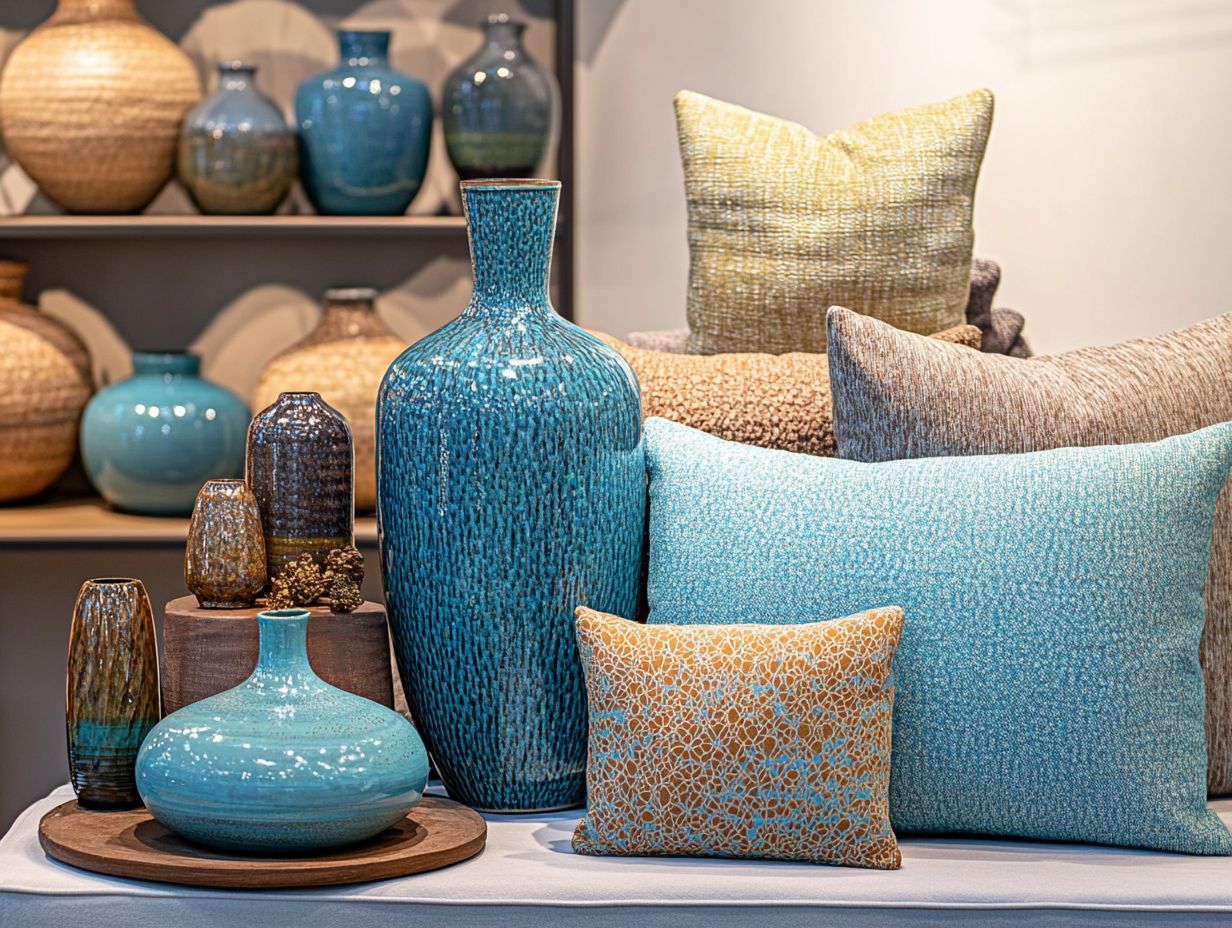
Incorporating accent colors into your interior design can greatly improve the look of your space. These vibrant pops of color contrast beautifully with the dominant hues while also carefully considering the feelings these colors create.
Accent colors create focal points. They draw attention to areas you want to highlight, like a stylish bookshelf or an artwork that might otherwise fade into the background.
To seamlessly integrate these accent colors, start by selecting shades that complement your existing palette. For example, a rich navy backdrop can be enlivened with mustard yellows or earthy greens.
Strategically placed accessories can tie the room together in perfect harmony. Items like pillows, throws, or decorative vases ensure that your overall aesthetic remains both balanced and cohesive.
Incorporating Decorative Items
Incorporating decorative items into your home decor provides a unique opportunity to infuse your space with personality and style. By thoughtfully aligning color combinations with your overall design vision, you can elevate the emotional resonance of each room.
These decorative elements, which may include art, soft furnishings, and even functional objects, play a crucial role in adding depth and texture to your interior environment. They transform it into a truly captivating space.
Choosing Colors for Decorative Items
Choosing the right colors for your decorative items is essential in home decor. These elements should not only complement your established color palette but also enhance the emotional tone you want to create in the space. For tips on how to use color in home accessories, consider the overall ambiance you aim to achieve.
Understanding how shades interact can profoundly affect the atmosphere of a room. A well-coordinated design can evoke a sense of warmth or tranquility, depending on the hues you select.
It’s also important to factor in the natural light in the area since the perception of colors can shift throughout the day. A practical approach is to create a mood board, which is a visual tool that helps you organize colors and styles.
By incorporating a blend of complementary and contrasting colors think soft pastels paired with bold accents you can achieve a dynamic yet harmonious atmosphere that truly reflects your personal style while remaining inviting.
Mixing and Matching Colors
Mixing and matching colors is truly an art form. It enables you to create dynamic visual interest while adhering to the principles of color theory for successful combinations.
By grasping various techniques, you can discover endless possibilities right now in your home decor. For example, utilizing complementary colors those that sit opposite each other on the color wheel can infuse vibrancy into a room.
Imagine a bold blue accent wall beautifully contrasted with vibrant orange throw pillows. On the other hand, employing analogous colors, which are adjacent to each other, can foster a soothing atmosphere.
A palette of soft greens, teals, and blues evokes a serene coastal vibe, perfect for relaxation. A monochromatic scheme, focused on varying shades of a single color, exudes sophisticated elegance.
Picture a room adorned with layers of whites, creams, and taupes that create a serene ambiance. By incorporating these strategies, you open the door to creativity, allowing your spaces to reflect your personal style while maintaining visual cohesion.
Creating Balance and Harmony
Creating balance and harmony in your home decor is key to achieving a cohesive and inviting atmosphere. The interplay of colors like complementary and analogous shades should work seamlessly with neutral tones.
By applying the principles of color theory, you can ensure that every element contributes to a harmonious design that resonates with the emotional responses you aim to evoke.
Using Colors in Design
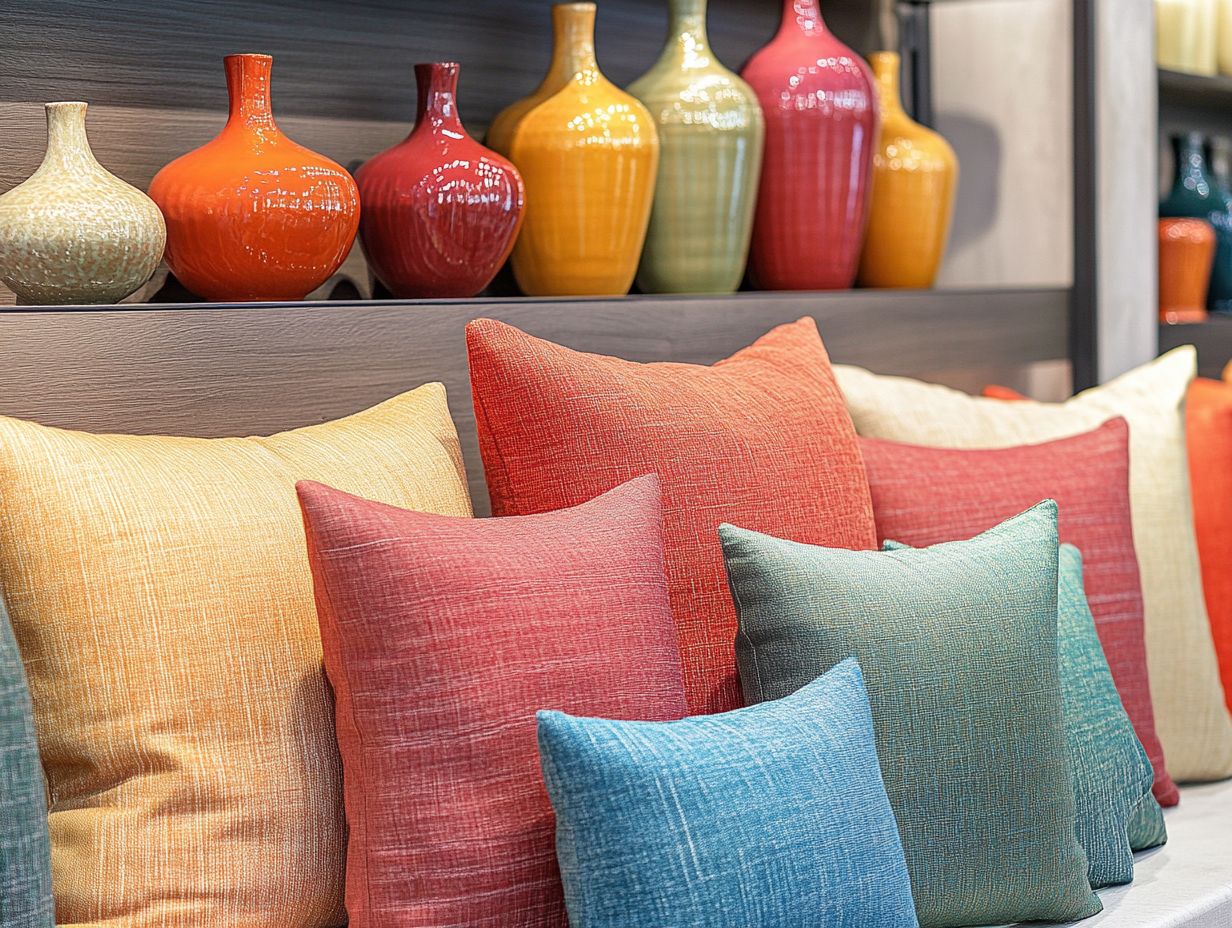
Using complementary and analogous colors in your design enhances visual interest. These combinations can create striking contrasts or blend harmoniously, shaping your space’s atmosphere.
Complementary colors sit opposite each other on the color wheel, like blue and orange. They infuse energy, making a room feel vibrant.
On the other hand, analogous colors are next to each other, like green, blue, and teal. They foster calmness and cohesion.
Imagine your living room. Pairing deep navy with soft coral accents evokes warmth and energy. Alternatively, soft mint combined with gentle seafoam transforms the space into an oasis of tranquility.
Start with one main color you love. Choose one or two extra colors that go well with it. This creates a balanced and polished look.
Using decorative pillows, area rugs, or artwork is a great way to seamlessly incorporate these colors. This will elevate your space to new heights of sophistication.
Creating a Focal Point
Creating a focal point in your home decor draws attention to specific areas, elevating emotional resonance. The right color combinations highlight these features.
Choose hues that align with the room’s purpose. For example, deep blues or soft greens in a serene bedroom promote relaxation. Vibrant reds or yellows in a kitchen spark creativity and conversation.
Incorporating contrasting textures, like a plush rug against a sleek wooden floor, adds depth. Decorative elements like artwork or statement furniture can further emphasize these colors, creating a cohesive yet dynamic environment.
Tips for Using Color Theory in Home Decor
Applying color theory principles to your home decor elevates the aesthetic and emotional appeal of your space. It’s vital to consider decorating tips for a cohesive color scheme that evokes the desired emotional response.
Understand how colors interact, appreciate the role of texture, and recognize the importance of balance. This knowledge helps create harmonious environments that beautifully reflect your personal style.
Experimenting with Different Color Schemes
Experimenting with different color schemes leads to astonishing transformations in your home decor. It allows you to discover combinations that evoke specific emotional responses.
For instance, pairing calming blues with soft whites creates tranquility, ideal for a serene bedroom retreat. Bold reds and yellows inject energy into a lively kitchen space.
Embrace a playful approach to mixing shades. Try out color swatches on your walls or use digital design tools to visualize potential palettes.
Flexibility is key; often, the most unexpected combinations yield visually appealing results. Let your creativity guide you adapting designs to reflect your personal tastes leads to extraordinary environments.
Adding Texture and Contrast
Adding texture and contrast to your home decor is essential for enriching how things look. These elements can significantly enhance the emotional response evoked by your chosen color palette.
When you thoughtfully combine various materials like wood, metal, and fabric, you create a rich tapestry that draws the eye and invites touch. For example, consider pairing a sleek, modern sofa with a chunky knit throw. This pairing establishes a delightful interplay between smooth and coarse surfaces.
Layering different textures adds visual interest and fosters a cozy atmosphere. This makes your spaces feel more inviting. Think about integrating natural elements, such as a woven jute rug or a linen throw pillow, to achieve a balanced aesthetic.
Remember, the key lies in harmonizing textures while maintaining a consistent color scheme. This ensures that the overall look remains cohesive and engaging.
Frequently Asked Questions
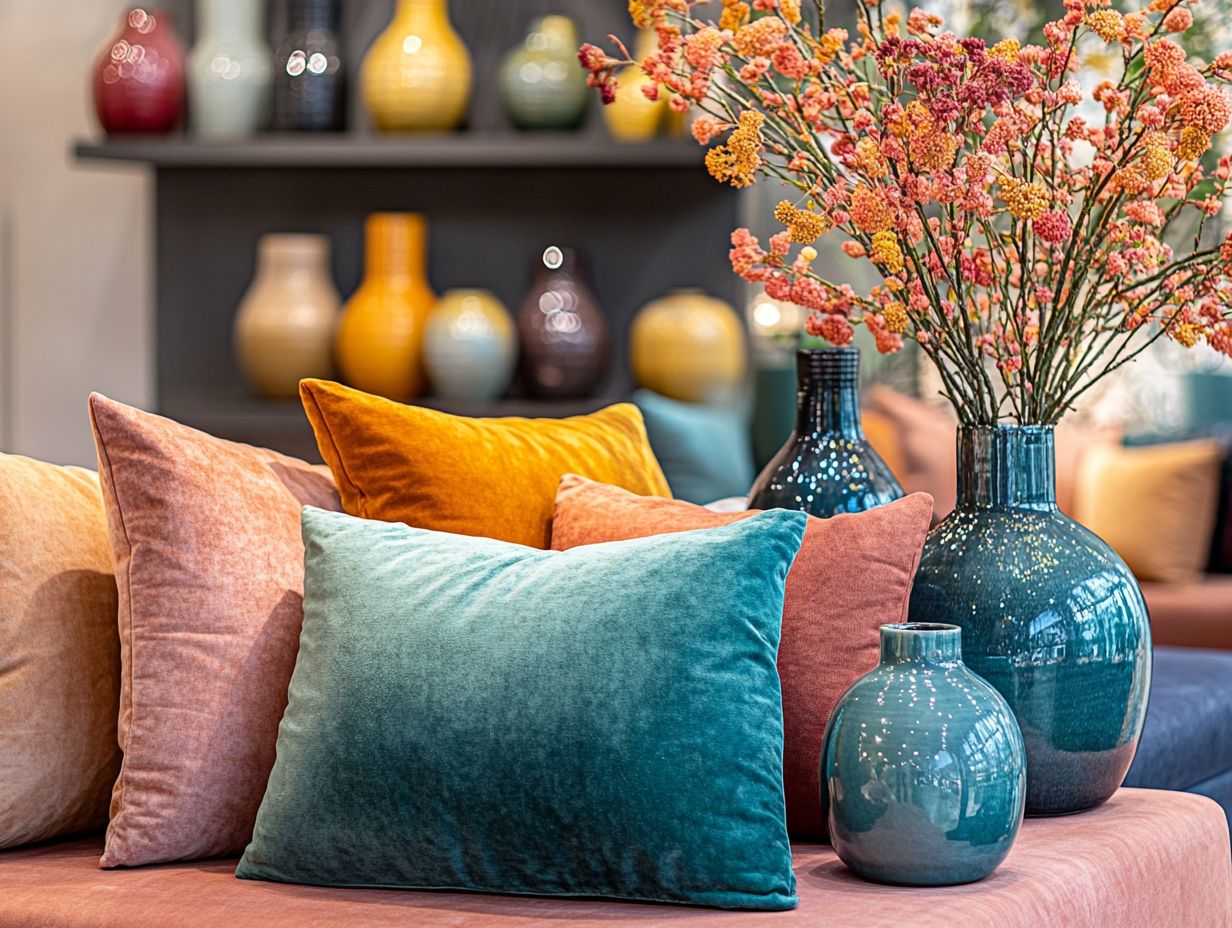
Got questions about color theory? Let’s dive in!
What is color theory and why is it important for decorating with decorative items?
Color theory is a set of principles that explain how colors work together and create different visual effects. It is vital for decorating with decorative items because it helps you choose colors that complement each other, creating an overall harmonious look.
How can I use the color wheel to choose decorative items for my home?
The color wheel is a helpful tool for understanding color relationships. You can use it to create a color scheme for your home by choosing colors that are opposite each other on the wheel (complementary colors) or colors that are next to each other (analogous colors).
What are some ways to incorporate color theory into my home decor?
One way is to choose a dominant color for your space, then use accent colors from the same color family to add interest and create a cohesive look. You can also use the 60-30-10 rule, where 60% of the room is one color, 30% is a secondary color, and 10% is an accent color.
Can I mix and match different colors and patterns when using color theory with decorative items?
Yes! As long as you follow the principles of color theory, you can mix and match colors and patterns to create a visually appealing and balanced space. Just be mindful of the intensity and saturation of the colors you are using.
How can I use color theory to create a specific mood or atmosphere in a room?
Certain colors and color combinations can evoke different emotions and moods. For example, warm colors like red and orange can create a cozy and inviting atmosphere, while cool colors like blue and green can create a calming and serene vibe.
Are there any common mistakes to avoid when using color theory with decorative items?
One common mistake is using too many bold or bright colors in one space, which can create a chaotic and overwhelming look. It’s also important to consider the lighting in your room, as natural and artificial light can affect how colors appear. It s always a good idea to test out colors in your space before committing to a full design.
Explore more ideas to enhance your d cor!


